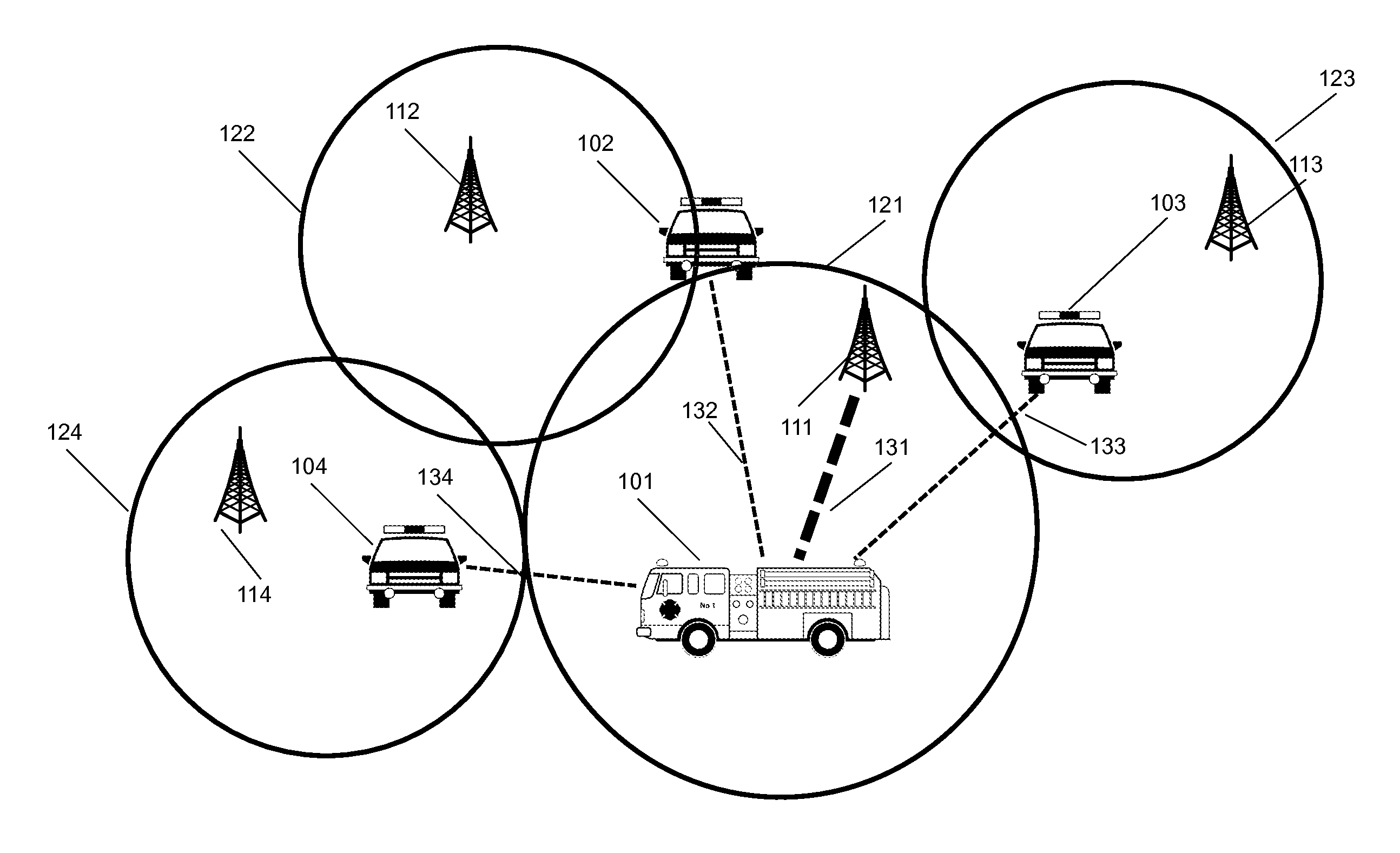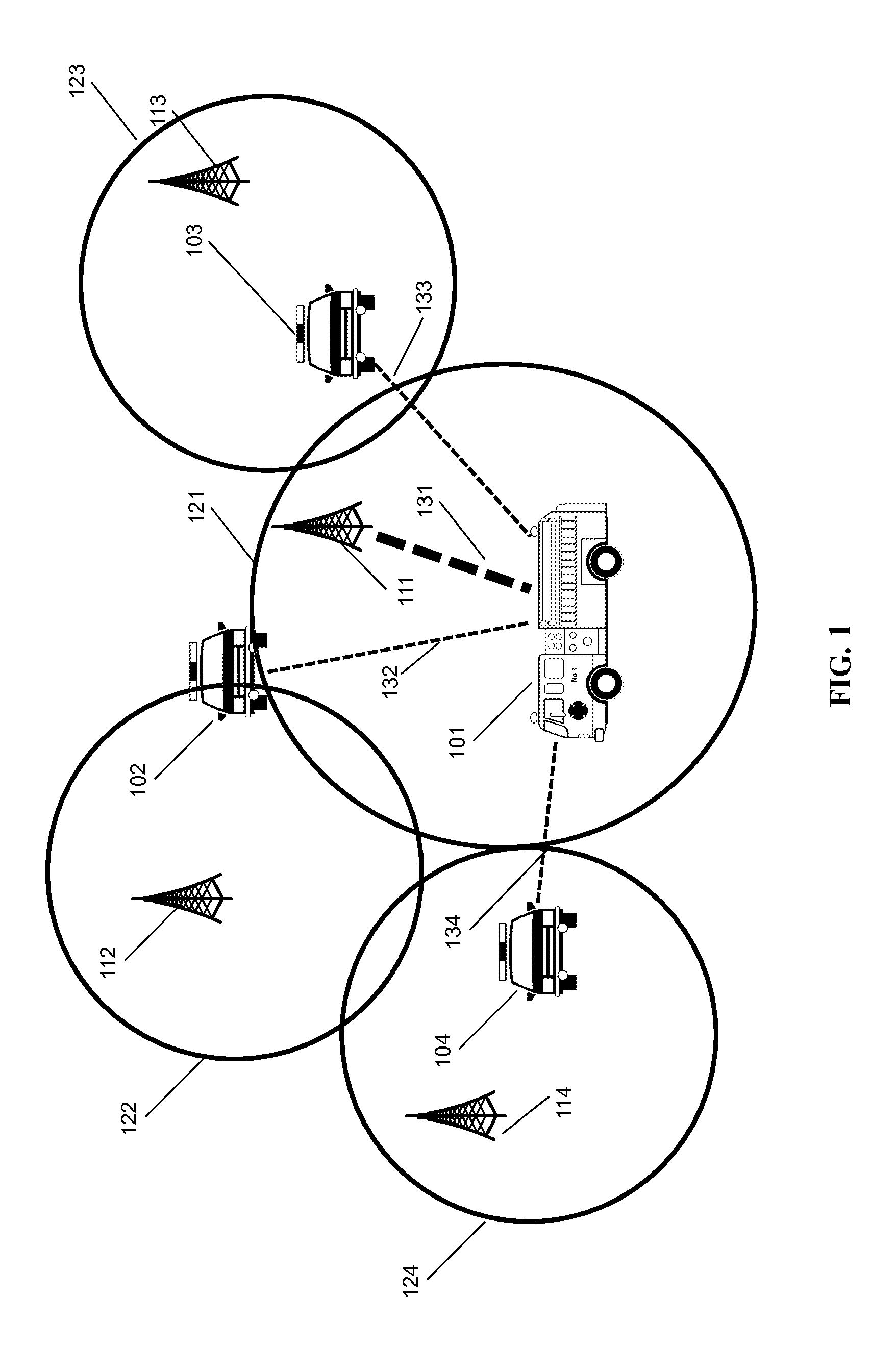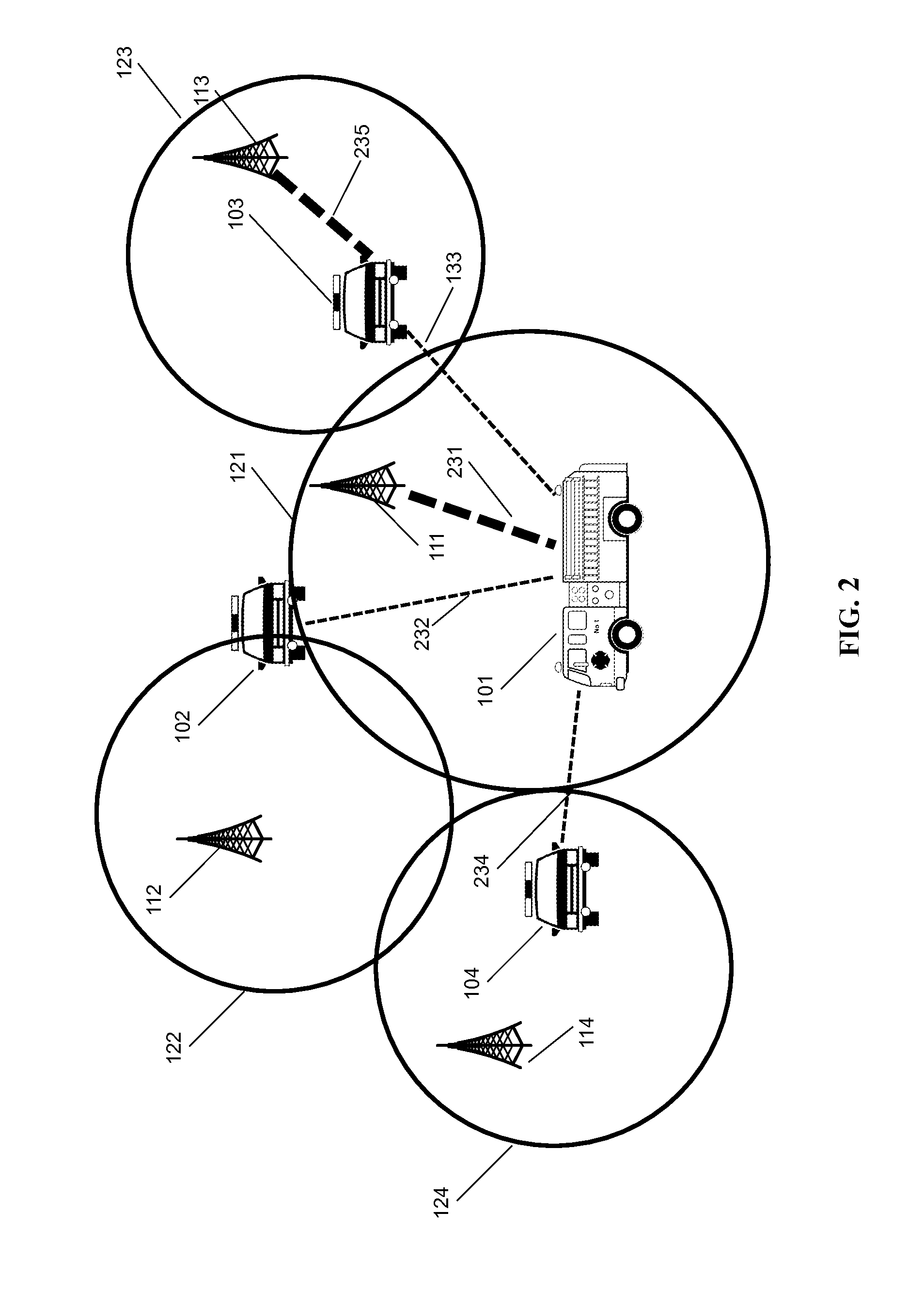Multi-Egress Backhaul
a backhaul and multi-egress technology, applied in the field of multi-egress backhaul, can solve the problems of multiplicity of problems, one lte backhaul connection may not be sufficient for a network supporting multiple devices, etc., and achieve the effect of increasing the overall backhaul capacity of the ad-hoc mesh network
- Summary
- Abstract
- Description
- Claims
- Application Information
AI Technical Summary
Benefits of technology
Problems solved by technology
Method used
Image
Examples
Embodiment Construction
[0015]Consider the case where in-vehicle base stations are using existing LTE coverage as backhaul to the core network. While in transit, each of the in-vehicle base stations may connect to a nearby LTE macro cell for providing backhaul. The connectivity to a macro cell may be referred to as “bring-your-own coverage” (BYOC) capability, and may be enabled by an LTE UE modem on a serial bus, such as an LTE modem on a universal serial bus (USB), incorporated into each of the in-vehicle base stations. These LTE macro cells would be located near each vehicle, and since the vehicles are in transit and / or are physically in different locations, each vehicle may be on a different macro cell.
[0016]However, once the vehicles meet at a particular emergency site, all but one of the in-vehicle base stations may shut down their individual access / BYOC LTE cells when they are near another vehicle with an active BYOC LTE cell (in this figure, the van). This results in a reduction of interference in t...
PUM
 Login to View More
Login to View More Abstract
Description
Claims
Application Information
 Login to View More
Login to View More - R&D
- Intellectual Property
- Life Sciences
- Materials
- Tech Scout
- Unparalleled Data Quality
- Higher Quality Content
- 60% Fewer Hallucinations
Browse by: Latest US Patents, China's latest patents, Technical Efficacy Thesaurus, Application Domain, Technology Topic, Popular Technical Reports.
© 2025 PatSnap. All rights reserved.Legal|Privacy policy|Modern Slavery Act Transparency Statement|Sitemap|About US| Contact US: help@patsnap.com



